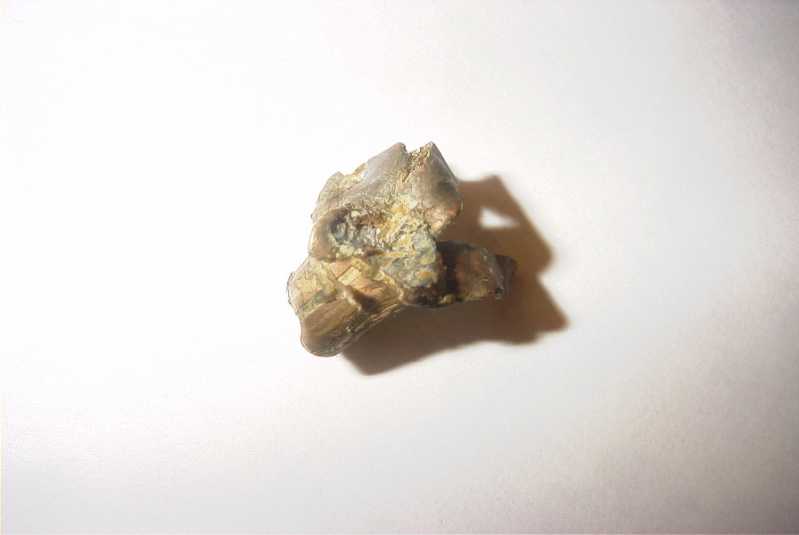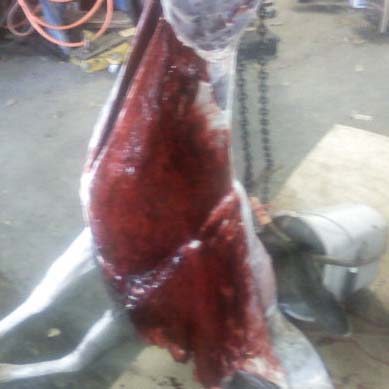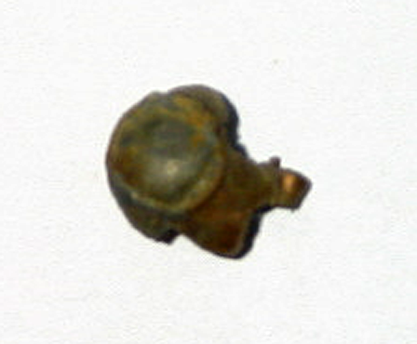+1 for what Graybeard wrote.
One of the best examples I have is my Remington 700, 22-inch barrel in 270 Winchester, and my Savage 110CL, 22-inche barrel in 270 Winchester. The ammunition I was shooting was a lot of fifty loads in new Winchester brass, WW primers, and 140-grain Silvertip bullets. The powder was WMR. I had four targets set up on a large backing.
I setup my Chrony fifteen feet from the muzzle and fired five shots from the Remington, and pull it down to let the barrel cool. I immediately switch to the Savage and fired five shots. After each shot I had put the rifle down a short time to record the results.
The outcome was the Savage averaged 30 fps more velocity then the Remington. The Savage was slightly more accurate. Both actions are glass bedded.
The difference in these two rifles appears to be consistent. On another occasion the load was 150-grain Hornady Spire point pushed by H4831 and CCI200 primer. The average velocity from the Remington was 2830 fps and the average from the Savage was 2870. My 2008 buck was taken with this load using the Remington 700.
The different also shows up in rifles of the same make using factory ammunition. A time back I purchased a few boxes of Winchester-Western 150-grain ammunition for the .270 Winchester. This was for those times when work interfered with my reloading time. I tried it in my Remington 760 and the accuracy was not there and I used the above Hornady load to take my deer. I pulled the ammunition out a few years later after putting a new scope on the Remington 700. It proved to be accurate enough that I set the remaining boxes aside for hunting. At the time of purchase the load was advertised at 2900 fps. As I recall this was out of a 26-inch barrel. At 6700 feet elevation, which is in the range, that I normally hunt the WW load produced an average velocity around 2727 fps.
I used Sierra Bullets Infinity program to create a new data card for the WW load. My brother has been so impressed by the performance of this factory bullet that he had bought a thousand of these bullets in bulk from Midway. The months between this activity and deer season I had spent over 90-days working all over the West. There had been no time for additional loading the Remington 700 was my go to rifle with the WW factory loads.
I spotted three Mule deer bucks, and successfully took one at just over 250+ yards with one shot in the chest. The WW PP penetrated over 25-inches of deer and stopped in the fifth rib after cutting the four before into. The bullet retained 74% of its weight, and expanded to 75-caliber.

I took a buck this year using the described Hornady load. I shot the buck just behind the shoulder at 32.5 yards. At point of impact the bullet was traveling about 2770 fps. Watching in the scope I could see the hide on the buck ripple like water in a still pond after a rock has been tossed into it. The bullet created a 2+-inch hole in the off shoulder when exiting. What amazed me was the damage on the entrance side.

A few lessons learned are that highest velocity is not always critical for success for most of my hunting. Tying these experiences in with over fifty years of using the 270 Winchester I feel the 150 and 140-grain bullets produce better results with a higher percent of exits then the 130-grain bullet.
I have loaded a lot of Remington Bronze Pt bullets and killed a good number of bucks over the years with it. Either they dump the buck on the spot or in a few feet. I have never had this bullet exit a deer; fragmentation is the norm with massive damage to the heart/lung region, and it might encompass the liver. The 130-grain C-L normally offers similar results with a larger portion of the bullet being recover in the far side.
In the early years with the 270 a brother normally shared my ammunition and he was more successful then I. After spending a few hours of tracking a buck shot in the lungs with a Bronze P.T. I was ready for a change. The bullet did the job but made it into a nasty brush-oak thicket. I spent time crawling on my hands and knees looking for that guy. It was a tough recovery, and it took a few more similar experiences before I switched.
When I was in high school I had started loading the 270 with IMR4064. In a few years I switched to surplus 4831. The surplus is now duplicated with NEWLY MANUFACTURED H4831, which is not to be mixed up with IMR4831. At the time I developed my loads I was trying to achieve factory velocity downsized using a 22-inch barrel. In 1970 I did not have a Chrony, but recently I had a box of shells I loaded with Remington 130-grain C-L, pushed by 60-grains of surplus 4831. I loaded this ammunition in 1970 in once fired Remington cases. I fired the old loads across my Chrony and obtain an average velocity of 3050 fps, which is close to today’s published velocity. (My velocities are taken 15-feet from the muzzle.)
I started with a Remington 760, 270 Winchester, and later purchased a Savage 110CL, in 270 Winchester. In theory the 760 became my heavy cover rifle, worked fine with 4831 pushing 150-grain bullets. The Savage 110CL became my mountain rifle, and antelope rifle using 130-grain bullets. I switched to 130-grain Hornady SP bullets in the Savage pushed by surplus 4831 or 60.5-grains of WW785. The Hornady bullet was recover from a California Mule deer shot at 145-yards. The buck was shot behind the shoulder and ran 15 to 20-yards and flopped over.

My photograph is not the best but the bullet demonstrated good weight retention and expansion. When Hornady came out with its 140-grain BT for the .270 I did a lot of load development with 4831, WW785, and later with WMR. My favorite load with WW785 came out of the Hornady manual and produced 3030 fps out of the Savage. The 140-grain bullet has anchor the deer on the spot or within 20-yards, none of the bullets have been recovered.
My middle of the road favorite H4831 powder charge with a 150-grain bullet from late 1960 is now a maximum load. My 130-grain H4831 is now at maximum. When I started out Sierra was the most conservative manual. Lyman was highly trusted because it sold equipment not bullets or powder. My earliest Lyman manual dates back to 1963. The key message in all the manuals was to start low and work up. I followed that advice, I might have a target load, but I would start by loading five rounds and then work up in one-grain increments and dropping to .001 increments when nearing maximum. This paid off when developing my first loads with the 140-grain Hornady.
At the time I purchased the 140-grain Hornady I could not find any published data using H4831. I started low using 150-grain data and worked up there. My goal was to reach 58-grains. The published maximum in the Hornady 7th edition is 59.9 grains. I was seeing pressure signs before I reached 58-grains and backed off to 57.4 grains of H4831. I pulled the bullets in the 58-grain test loads.
I have since abandon H4831 for my 140-grain bullets and use now discontinued WW785 and WMR.
A while back a friend tried a different approach when loading for a new rifle, the approach resulted in facial burns when he blew a primer. Rather then starting low with the cartridge he was loading he dropped the maximum published loaded a grain or so and then loaded a large number of rounds. He immediately started a grain below the published maximum; he did not stop with the warning signs of a slightly sticky bolt from the first rounds. The 3rd or 4th round blew the primer and hot gases escaped into his face. Fortunately he was wearing safety glasses.
I appreciate him sharing his experience because it is a good lesson learned and relearned. I am thankful he was wearing safety glasses because they saved his eyes, but I have no heart felt sympathy, this was a preventable accident. He knows better, he is not a beginning loader, but a veteran loader who did not follow the basic rules. His miss adventure is a reminder to me; follow the rules. These rules are not enforced by anybody, but your body and your pocket book will pickup the tab.